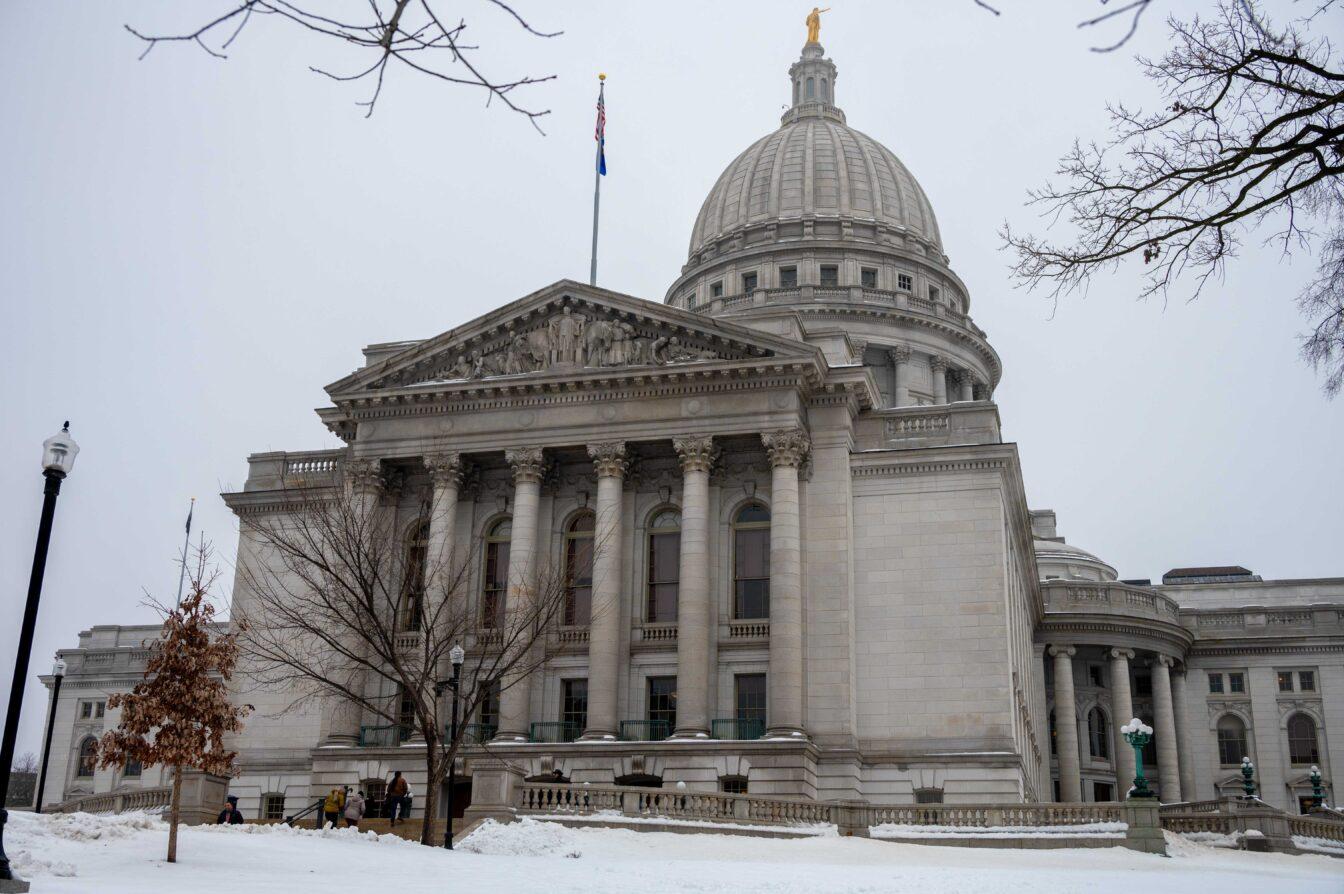Democratic law firm Elias Law Group filed a motion Jan. 16 calling on the Wisconsin Supreme Court to adopt new congressional maps in time for the fall 2024 election. The group argued the current district maps perpetuate partisan unfairness in Wisconsin elections.
The lawsuit follows years of gerrymandering, with Democrats labeling district maps unfair, according to Elias Law Group. In a separate redistricting case, the Wisconsin Supreme Court overturned the “least change” requirement, eliminating the mandate for congressional maps to undergo the least amount of change possible.
The current drawing of legislative districts makes it challenging for Democrats to get representation in the government, University of Wisconsin professor of political science Barry Burden said. Due to party polarization in Wisconsin, Republicans have an advantage with the current maps.
“It [gerrymandering] makes it hard for Democrats to get proportional representation in statewide maps because the drawing of districts tends to put urban areas together,” Burden said. “There are an excess number of Democrats needed there to elect a Democrat to office, whereas Republican voters tend to be more evenly distributed across the state, so they just have sort of a natural advantage as a party.”
Threat assessment trainings launch to prevent violence in Wisconsin schools
Several federal laws dictate how maps must represent the population. For example, the Voting Rights Act says districts must be drawn to give marginalized voters a fair chance of electing their preferred candidates, Burden said.
For Democrats, these redrawn maps are important because the U.S. House of Representatives is very narrowly divided. With Republicans holding a three-seat cushion, any change in Wisconsin’s congressional delegation could determine which party has control over the federal government, Burden said.
College Democrats of Wisconsin Chair Jake Williams expressed support for college students looking to influence the political landscape. Through voting, students can change policies relating to issues they care about, like affordable housing.
But Williams said gerrymandering can limit the impact of votes in college towns, which tend to lean Democratic.
“Young people have the power to change elections, though there are instances in college towns where young people’s votes are being suppressed under the current maps,” Williams said. “For example, at UW–Whitewater, their legislative maps go right through the campus. So, you’ll have half the campus voting in one election race and another half voting in a completely separate one.”
Gov. Evers announces teacher apprentice program at State of the State Address
Safe districts — districts with a high majority of either Democratic or Republican voters — are a product of gerrymandering, Williams said. Both Democrats and Republicans in safe districts have become complacent because they will likely win re-election regardless of their policies, Williams said.
For example, despite Michigan voting for both Republican and Democratic candidates in statewide elections, their state legislature is solidly Republican, Burden said. Michigan was able to combat gerrymandering by creating a ballot initiative that allowed voters to create an independent redistricting commission, Burden said.
In Wisconsin, new legislative maps must follow certain criteria, Burden said.
“[The map] has to have equal populations of the districts,” Burden said. “And that’s especially true for congressional districts. They need to be exactly equal as best as they can based on the census data. The Supreme Court of Wisconsin has said they need to be absolutely contiguous districts, meaning each district needs to be one piece with no disconnected areas.”
It is important to note that this lawsuit has come late in the process of adapting redrawn districts, Burden said. The Wisconsin Supreme Court has already ruled on the legislative districts in a previous lawsuit, Rebecca Clarke v. Wisconsin Elections Commission, and they will review new maps proposed to them in the coming week. It is not yet clear whether the court will accept this second lawsuit targeting congressional districts.
Wisconsin Legislature votes to disburse withheld pay raises for UW employees
The goal of new legislative maps should be to accurately reflect the will of the people, Williams said.
“The negative effects of gerrymandering hurt everyone and hurt our democracy,” Williams said. “Regardless of how the Supreme Court redraws, we can get fair maps. It will help everyone, and it will help Wisconsin measurably.”
The motion asks to redraw new maps that will be kept for the remainder of the decade, according to the Elias Law Group. The attorneys representing the case are optimistic that there is still time before fall of 2024 to submit new maps that will better align with Wisconsin law.







